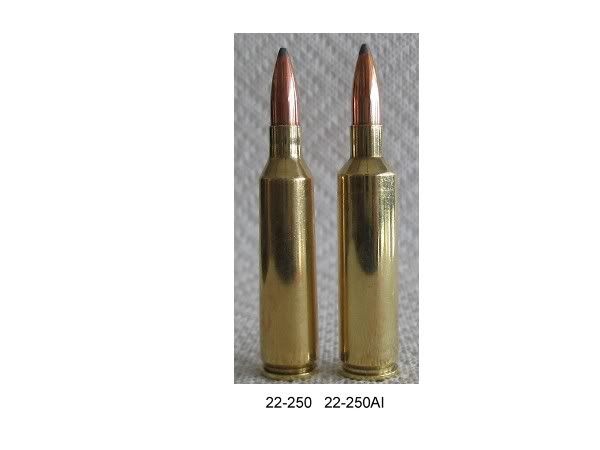So I am contemplating the next thing to go in the gun safe, and I decided a small-calibre centrefire rifle is on the cards. As I am a reloader already, the first and foremost thing in my mind is care and feeding - especially feeding, which is why I'm putting this thread here.
(In terms of what I'm buying the gun for, reading up on local laws and conditions and taking the advice of others assures me that either would be eminently suited to the task. That's not what's up for debate.)
If I go with the .223, I burn approximately ten grains of powder less per shot than with the .22-250. I can use the same powders I already have for .303 British (IMR 3031 and Varget/ADI AR2208). However, it means I have to keep a separate stock of small rifle primers and change out the primer seating mechanism whenever I load for one or the other calibre.
If I go with the .22-250 I burn almost as much powder per shot as with the .303, and there is a concern about shorter barrel life, relatively speaking. However, I can still use the same powders, and as a bonus, I can also use the same primers (no need to keep a different size; just buy more). I also don't have to change to a different primer-seating cup every time.
(At some stage in the more remote future I'm also considering something in the large-calibre range - possibly .45-70 - which again means large rifle primers and at least one shared powder; IMR3031).
Commonality of components => buying in bulk => saved costs and reduced confusion for the relative novice, not to mention avoiding all the fuss with small vs. large primer seating systems (especially if a third or even a fourth centrefire cartridge enters the picture). All of this plus a slight performance edge suggests I would be better served by the .22-250, its somewhat greater hunger for powder (and barrels) notwithstanding.
Or is the complication of a different primer size offset by the .223's lesser appetite for powder, and the advantage of diversity in case large rifle primer availability is locally compromised for whatever reason? (As far as brass is concerned, I'm not in the US and I don't think I have access to cheap milsurp brass - I'm well aware of how much that would swing the balance to the .223 Remington.)
Can anyone pick a hole in my reasoning?
(In terms of what I'm buying the gun for, reading up on local laws and conditions and taking the advice of others assures me that either would be eminently suited to the task. That's not what's up for debate.)
If I go with the .223, I burn approximately ten grains of powder less per shot than with the .22-250. I can use the same powders I already have for .303 British (IMR 3031 and Varget/ADI AR2208). However, it means I have to keep a separate stock of small rifle primers and change out the primer seating mechanism whenever I load for one or the other calibre.
If I go with the .22-250 I burn almost as much powder per shot as with the .303, and there is a concern about shorter barrel life, relatively speaking. However, I can still use the same powders, and as a bonus, I can also use the same primers (no need to keep a different size; just buy more). I also don't have to change to a different primer-seating cup every time.
(At some stage in the more remote future I'm also considering something in the large-calibre range - possibly .45-70 - which again means large rifle primers and at least one shared powder; IMR3031).
Commonality of components => buying in bulk => saved costs and reduced confusion for the relative novice, not to mention avoiding all the fuss with small vs. large primer seating systems (especially if a third or even a fourth centrefire cartridge enters the picture). All of this plus a slight performance edge suggests I would be better served by the .22-250, its somewhat greater hunger for powder (and barrels) notwithstanding.
Or is the complication of a different primer size offset by the .223's lesser appetite for powder, and the advantage of diversity in case large rifle primer availability is locally compromised for whatever reason? (As far as brass is concerned, I'm not in the US and I don't think I have access to cheap milsurp brass - I'm well aware of how much that would swing the balance to the .223 Remington.)
Can anyone pick a hole in my reasoning?

